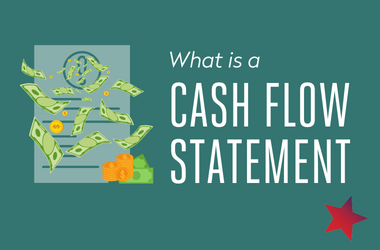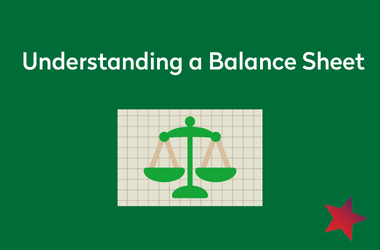Development & Fundraising for Artists
How to Obtain Individual and Institutional Donations
Development & fundraising through individual and institutional donations.
Everyone needs money, and if you are an artist, nonprofit, or dance organization, a good chunk of your income is probably raised through fundraising. In the nonprofit sector, fundraising is often called “development” and the two terms can be used interchangeably.
There are two basic types of development fundraising: individual giving and institutional giving.
Large organizations will often have different development teams that work on these two types of fundraising, but for small organizations and single artists, all the work probably falls on you, the artistic director, or a group of volunteers.
Here’s what you need to know about both types of fundraising for your small nonprofit organization or artistic entity:
Individual Giving for Artists
Individual giving is the most common and direct type of arts fundraising. Individuals are asked to donate to an organization or a project, and in return they may get special acknowledgments or perks such as a tax deduction, swag, invitations, or naming rights. Common forms of individual giving campaigns include appeal letters (either via snail mail or email), benefit events, crowdfunding, and membership clubs.
Individual giving is very personal. At first, donations often come from one’s personal or professional contacts. To grow your donor base, it is important to connect your fundraising goals with donors’ personal interests and appeal to them to support what you are doing. Similar to a sales funnel, individual fundraising starts from audiences encountering your work at the largest point of entry, such as your website or social media channel, and moving to increasingly smaller and more personal points of contact, such as your email list and ticketed performances. Eventually a small percentage of these individuals will convert into donors; some may even become board members and repeat donors. The key to converting audience members into donors is to leverage each point of contact with them, and encourage them to become more connected and committed to supporting your work.
Institutional Giving for Artists
Institutional giving refers to any money raised through institutional programs, such as grants, awards, fellowships, and scholarships. The process usually involves submitting a written proposal or application. Each institution will have its own funding priorities and guidelines for giving, often set by its board of trustees. Some will be open to new proposals, and others will accept applications only from preselected applicants. It is important to do thorough research before applying to any institution for funding. Good sources of information can be found in grant databases like the Foundation Center Directory, or on industry website listings such as Pentacle’s nextSteps or DanceUSA.
Below is a breakdown of several types of institutions that you may want to approach for funding:
Government Agencies – Development & Fundraising
There are federal, state and local agencies that give grants to arts and cultural organizations. Almost all are reserved only for nonprofit organizations or through a fiscal sponsor (see more about fiscal sponsorship below). Government grants are generally focused on public programs that serve the communities under their jurisdiction, so be sure to research their guidelines and follow all the instructions carefully. While the applications can be complicated, government grants are fairly dependable sources of funding and aim to be transparent and equitable in their giving.
Private Foundations – Development & Fundraising
Private foundations run the gamut from tiny family foundations with two trustees and no guidelines, to billion-dollar international philanthropies. Each one will have its own funding priorities and application process, so it is important to do your research and make contact with someone at the foundation who can let you know if your proposal matches their interests. Often the first form of contact with a private foundation is through a letter of inquiry (LOI). This is a short 1-2 page introduction to your work and why you are seeking their support. If the foundation responds favorably to your LOI, then you may get funding right away, or be asked to submit a full proposal. Keep in mind that you may never hear back from a foundation about your LOI, and proposals can take up to a year to be reviewed.
Corporate Giving – Development & Fundraising
Corporate giving can take many forms, from grants to sponsorships to in-kind donations. Some may have employee giving programs, which you access through individual donors, others may have a separate foundation that handles their corporate giving. Again, it comes down to research and who you know in the corporation.
Fiscal Sponsorship – Development & Fundraising
Most large donors and institutions will only give to nonprofit 501(c)(3) organizations for tax reasons and fiscal accountability. If you are not incorporated as a 501(c)(3), you can still access these donors using a fiscal sponsor. Fiscal sponsors are nonprofit 501(c)(3) organizations who receive monies on your behalf and accept financial and legal responsibility for the funds. Generally, fiscal sponsors will deduct a nominal administrative fee before regranting any monies raised to you. Most fiscal sponsors will ask you to sign a contract and agree to their terms for the grant application and management. Ideally the arrangement is beneficial for both sides, and you and your fiscal sponsor will have clear and open communication throughout the process.
Fundraising through individual and institutional donations is hard work.
It requires a great deal of research, attention to detail, and persistence to pay off. Don’t try to do everything at once. If you have a short term fundraising goal, work on cultivating individual giving first. Institutional giving takes longer, but the funds can be larger. This is appropriate for your long-term plans and goals. Once you’ve decided what you want to do and the timeline, devote the necessary resources into pursuing these fundraising goals. Once your fundraising revenue gets flowing, there is no limit to what you can do!
Pentacle remains dedicated to continuing to provide a high level of support to artists during these extraordinary circumstances. Alongside many other key and respected organizations in the field, we have begun accumulating and curating resources for artists and organizations experiencing income loss and other troubles as a result of the COVID-19 crisis. Find our list of resources here.
NEXTSTEPS GUEST WRITER: ANNA BRADY MARCUS | 02.11.22
ANNA BRADY MARCUS IS A GRANT-WRITER SPECIALIZING IN INSTITUTIONAL DEVELOPMENT FOR THE NONPROFIT PERFORMING ARTS SECTOR.
Latest Blog Posts
Top 5 Quickbooks Set-Up Tips
Top 5 Quickbooks Set-Up TipsManaging your organization’s finances can be overwhelming and time consuming. At Pentacle, we use Quickbooks, an accounting software that helps you manage your financial transactions, both internally as well as with our artists...
Understanding A Cash Flow Statement
Understanding A Cash Flow Statement What is a Cash Flow Statement? A Cash Flow Statement is a financial statement that tracks the movement of a company’s cash over a selected period of time. This is an all-inclusive statement because it includes the inflow and outflow...
Understanding A Balance Sheet
Understanding a Balance SheetWhat is a Balance Sheet? A Balance Sheet is a financial statement that summarizes the company’s assets, liabilities, and equity at a specific point in time. The Balance Sheet is an essential tool used by organizational leaders, Board of...



